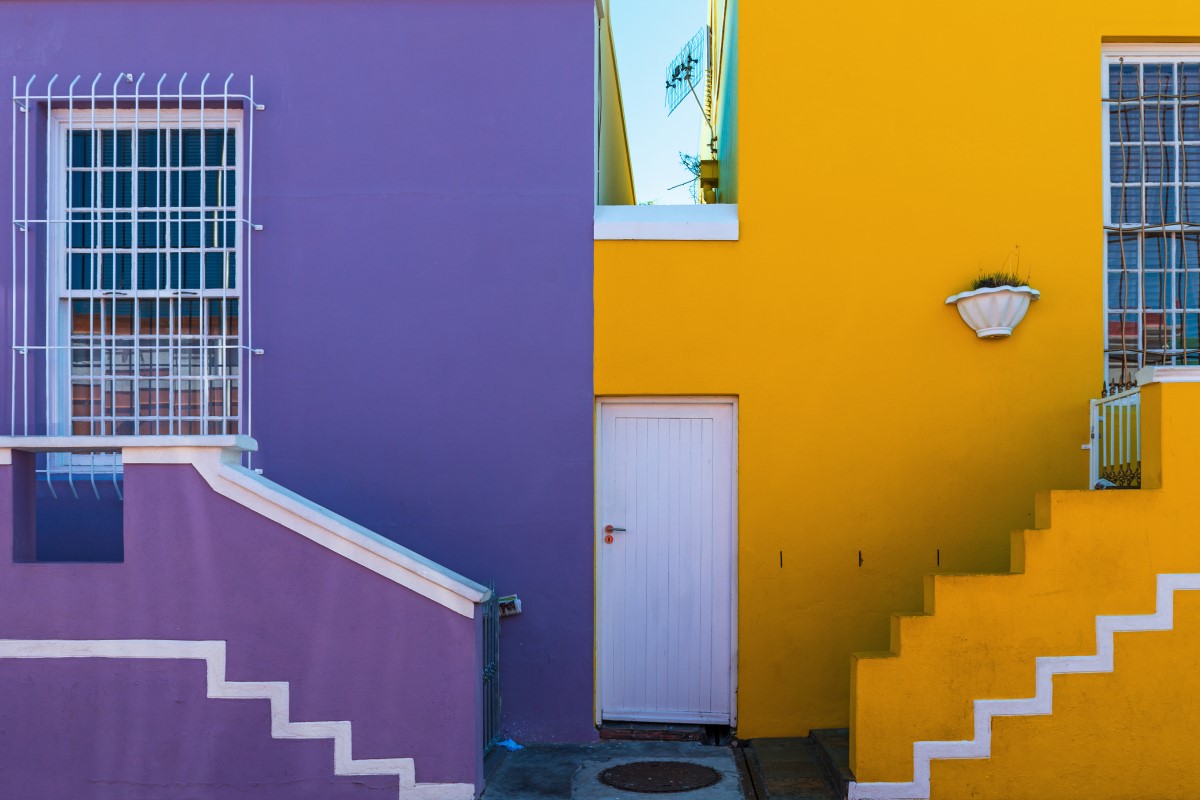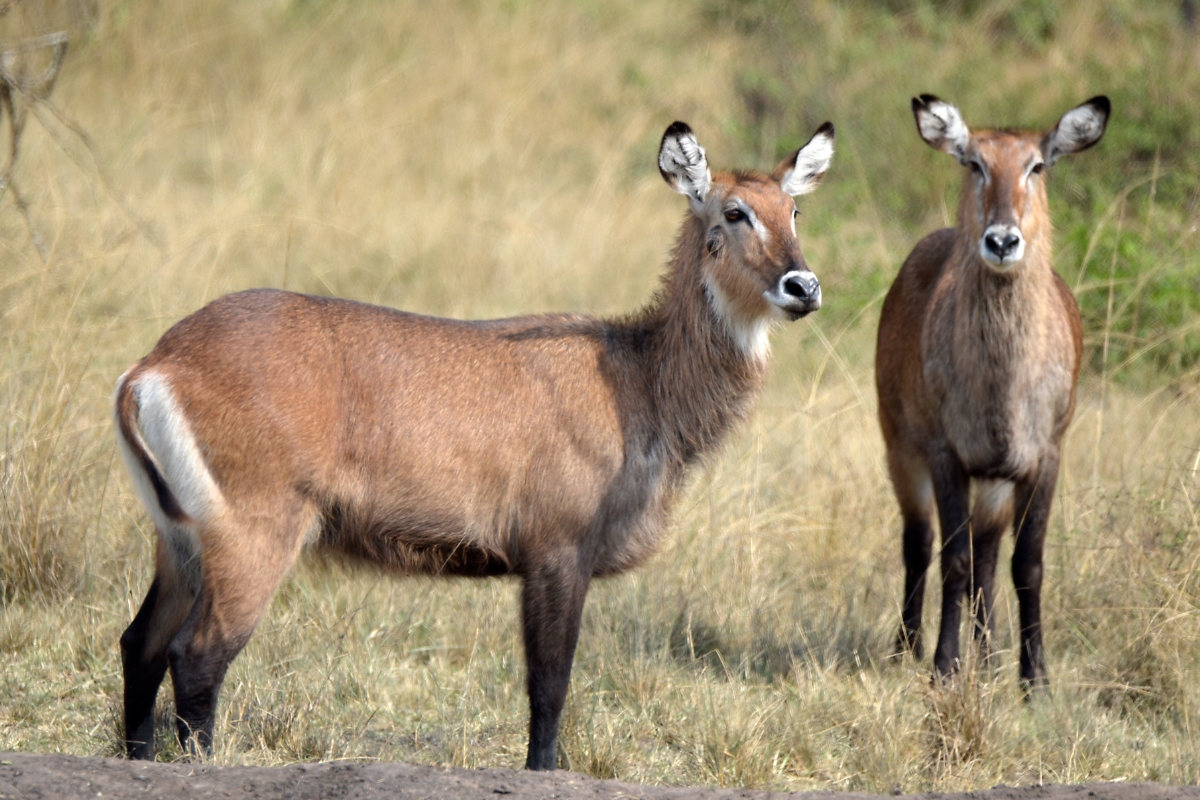Cape Town’s Blue Flag beaches, contemporary art galleries, and vibrant foodie scene make it the kind of city you’ll never want to leave. And that’s before we’ve even mentioned the iconic landmark of Table Mountain, the breathtaking winelands in and around the city, and the spine-chilling museum on Robben Island where Nelson Mandela was imprisoned.
The UNESCO World Heritage Site of Table Mountain defines Cape Town. You’ll catch your first sight of its almost impossibly flat profile before you plane has even landed, and by the time you reach the City Bowl it’ll be looming over you like a kindly grandfather. The mountain is seen through church doorways and bathroom windows; from swimming pools and classrooms. It causes traffic jams and early sunsets. It’s also the reason you can never truly get lost in Cape Town.
Section Type: standardWidthImageS
Pro-tip: Take the cable car up to Table Mountain, and hike your way back down.

Summitting the mountain, and marveling at the antics of the dassies (rock hyraxes) which live up top, is a highlight of any trip to Cape Town – and the good news is you don’t have to make the 3,000-ft vertical slog unless you really want to. Taking the cable car to the top allows you to enjoy the 360˚ view with a nice chilled glass of Chenin Blanc for company.
If you’re feeling adventurous, however, your guide would love to take you on a hike. The cable car means you can choose to hike in one direction only (up or down – depending on your fitness levels), but the plethora of trails will leave real mountain goats spoilt for choice. Table Mountain has more hiking routes per square mile than any other mountain in the world.
The value of experiencing Cape Town with SA Expeditions
Lions, elephants, and giraffes no longer traverse the Cape Peninsula – but this shouldn’t stop you from experiencing an unforgettable urban safari. When you travel to Cape Town with SA Expeditions, you can bank on the same stellar service levels you’d enjoy in an upmarket African game lodge.
You’ll be shown around by an expert local guide whose boundless passion for the city will surely rub off. Your guide will gauge your group’s interests and energy levels to tailor your itinerary. If the city’s busy, your guide will take you to lesser-known hidden gems that only the locals know about. And if the weather changes or the teenagers start to get ratty, you can change plans at the drop of a hat. All of our luxurious vehicles are equipped with gourmet pantries, toy boxes, inflatable stand-up paddle boards, and hiking packs, which will allow you to make the absolute most out of this incredible city. Read on for a rundown of all the other stuff you should see after you’ve been to the top of Table Mountain…
Section Type: standardWidthImageS
Your urban safari through Cape Town will be catered specifically to you.

The City Bowl
So named for the way it’s nestled in the natural bowl formed by the slopes of Lion’s Head, Table Mountain, and Devil’s Peak, the City Bowl is the cultural and business epicenter of the city. Walk the tree-lined avenues of the Company’s Garden, the site of the fruit and vegetable garden which supplied passing ships all those years ago, and grapple with the legacy of apartheid in District 6, the vibrant mixed-race suburb which was famously bulldozed in the 1970s.
Shop for trinkets from every corner of Africa in bustling Green Market Square, and explore the quaint, colorful streets of Bo Kaap which started life in the 1760s as a home for slaves from the East, and has retained many Islamic customs over the centuries. Browse the chic contemporary galleries and boutiques of trendy Bree Street, or sip on a freshly roasted flat white (or a freshly pressed turmeric and wheatgrass immune booster!) from one of the many funky eateries in the hood.
Section Type: standardWidthImageS
A glimpse of the rainbow visible in Cape Town’s multi-chromatic Bo Kaap neighborhood.

The V&A Waterfront and Robben Island
Get up and close with sharks and cephalopods at the Two Oceans Aquarium in the V&A Waterfront, an upmarket development in the city’s port precinct. Then meet the artisans making sculptures out of driftwood and old flip-flops in the nearby Watershed before popping next door to the magnificently renovated grain silos which house the Zeitz Mocaa – the world’s most important museum of contemporary African Art.
The V&A Waterfront is also the gateway to Robben Island, where Nelson Mandela spent most of his 27 years in jail. After a bracing high-speed ferry trip, you will be shown around the island by a former political prisoner. Learn about its fascinating history as a leper colony, a whaling station, and a World War II military fortification; visit the African penguin colony; and go on a prison tour which culminates with a spine-chilling visit to the cell of prisoner 466/64, aka Nelson Mandela.
Section Type: standardWidthImageS
The World Cup stadium is now an iconic part of Cape Town’s waterfront.

The Cape Peninsula
The slender ridge of mountains which extends 40 miles from central Cape Town to Cape Point is a paradise for nature lovers. First up are the majestic Kirstenbosch Botanical Gardens: the jewel in the crown of the Cape Floristic Region, a biodiversity hotspot that boasts a greater variety of plant species than the Amazon jungle. This is closely followed by the Constantia Winelands, home to gorgeous 300-year-old wine estates which have the distinction of producing Napoleon’s favorite tipple (modern connoisseurs are equally complimentary).
The first point of interest on the False Bay coastline is the long sandy beach of Muizenberg, widely regarded as one of the best spots in the world to learn to surf. Wending your way further south, you’ll come to the oh-so-quaint gentrified fishing village of Kalk Bay, the popular swimming beach at Fish Hoek, and the historic British naval outpost at Simon’s Town. Simon’s Town is also home to the world-famous penguin colony at the almost impossibly picturesque Boulders Beach. An hour spent watching these adorable little creatures – so ungainly on land yet so majestic when scything through the azure waters of the Atlantic – is sure to be a highlight of your African adventure.
Section Type: standardWidthImageS
Boulders Beach is a must-visit for beach-lovers and penguin-lovers alike.

Your journey southwards culminates at the dramatic landmark of Cape Point – standing atop the historic lighthouse, you will stare out to an ocean so vast that the nearest landmasses are Argentina, Australia, and Antarctica.
Now for the return leg of your Peninsula tour. After an optional visit to an ostrich farm (great for kids), you’ll pass a string of rugged, pristine beaches – each more stunning than the next – before spilling out onto Chapman’s Peak Drive, a vertiginous, serpentine strip of asphalt whose spectacular ocean and mountain views make it a shoo-in on any list of the world’s most beautiful roads.
And still your tour is not over! After passing through the working fishing town of Hout Bay, you’ll be treated to yet more beautiful beaches – Llandudno (your author’s favorite spot for a dip), glitzy Camps Bay with its beachfront cafes and bars, and exclusive Clifton, the preferred bronzing locale of Cape Town’s most beautiful people – before finally arriving back where you started.
Section Type: standardWidthImageS
One of the myriad stunning vistas that await on the journey through Cape Peninsula.

The Stellenbosch winelands
Less than an hour inland from Cape Town, you’ll find the 350-year-old winelands of Stellenbosch, Franschhoek, and Paarl – one of the fairer corners of the Fairest Cape. You can expect historic Cape Dutch architecture (and some incredible modern architecture), breathtaking mountain and ocean views, and world-class wines and food.
In the glass, South Africa is probably best known for its old-vine Chenin Blancs – a fruity, fresh white grape with high acidity – but it also boasts its own red varietal (Pinotage, a cross between Pinot Noir and Cinsault) and some very fine Cabernet Sauvignons and red blends. Whether you’re a veritable oenophile, or a weekend quaffer who’s more into off-the-beaten path scenery, your SA Expeditions guide will tailor the tour to your needs.
Where to stay
One of the best things about the winelands is the opportunity to stay at the peerless Babylonstoren, a destination in its own right which boasts an incredible eight-acre formal fruit and vegetable garden where all 300 species are edible! This working farm is an outstanding example of sustainable living which also happens to offer opulent lodgings and some of the best cuisine in Africa.
Section Type: standardWidthImageS
The gardens at Babylonstoren are, quite simply, the stuff of dreams. (Courtesy Photo: Babylonstoren)

But Cape Town’s hotels aren’t too shabby either! The Cape Grace Hotel in the V&A Waterfront prides itself on its stellar service and easy opulence – and the magnificent backdrop of Table Mountain, the gorgeous picnic areas, and the fantastic location in the heart of the shopping and restaurants seal the deal.
If you’re after something a bit more intimate, look no further than the 13-room Ellerman House: a boutique hotel which is taken from the very top drawer. Housed in a grand colonial mansion with exquisite ocean views, the service is off the charts, the food is decadent, the wine list is legendary, and the exceptional art collection will make you feel like you’re staying in a gallery (which, in many ways, you are). In short – a bucket-list property.
What’s in all the names?
Known as Hoerikwaggo – or the mountain in the sea – by the indigenous KhoeKhoe people, Table Mountain was given its – slightly uninspiring – European name by the Portuguese explorer António de Saldanha in 1503. But while the mountain is, as we’ve seen, at the heart of everything in Cape Town, the names of other local landmarks give more insight into the city’s past.
The first European to round Cape Point was Bartolomeu Dias who did so on 12 March 1488, duly christening it the Cape of Storms. While the name was apt (South Africa’s coastline has claimed at least 2 500 ships), it was later renamed by King John II of Portugal as the Cape of Good Hope – a nod to its strategic importance on the sea route to the East.
Section Type: standardWidthImageS
The Cape of Good Hope is an impressive landmark on numerous levels.

Although Portuguese ships did stop at the Cape to take on fresh water and to barter cattle and other goods from the locals, they never established a permanent presence here. That bold move was taken by the Dutch East India Company which established a victualling station here in 1652 under the command of Jan van Riebeeck. Van Riebeeck’s “very low opinion” of the KhoeKhoe led to the first KhoeKhoe-Dutch War in 1658 and laid the foundation for a “social order and class distinction based on race”, which continued well into the 20th century and – some would argue – beyond.
Cape Town’s importance as a global seaport dwindled in 1869 when the Suez Canal was opened, but by then it had already established itself as the capital of the Cape Colony. And when diamonds were discovered a few years later, the world suddenly had a new reason to visit the Cape.
Section Type: cta
Fast forward two hundred years and dazzling Cape Town has added dozens more reasons to demand your attention. Check out our most popular Cape Town itineraries, or chat with a Destination Expert about crafting the bespoke Cape odyssey of your dreams.

 Africa
Africa Africa
Africa